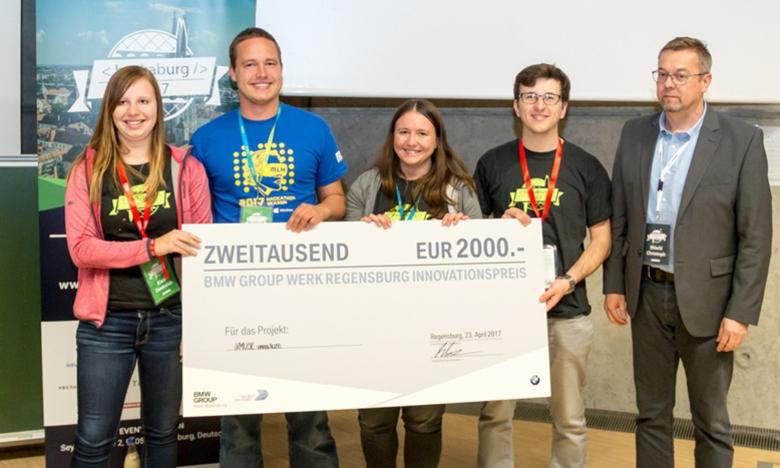Just a few weeks after coming back from my time abroad, I found myself travelling again for the weekend: In Regensburg (about 1h from Munich), Hackaburg was taking place for the second time. It is a student-run hackathon at OTH Regensburg. I had a blast there the last time, so I naturally decided to go this year as well.
Unlike most of the previous hackathons I attended, we already formed a team prior to the event – all of us Master’s students at TUM. Combined, our team has a little under 20 years of study time at TUM under the belt (which makes me feel kind of wise but also really old 😉 ).
The event kicked off with keynotes by sponsors and pitches by a couple of other participants looking for team members. Soon after, our team was sitting in a bar in downtown Regensburg, trying to think of what we wanted to build. While we had a bunch of decent ideas, none of them quite felt right. So, we decided to start over with a fresh mind the following morning.
In the end, it was Christoph who had the idea to get our fingers dirty on some hardware and just see where this would take us. We ended up choosing to use the Muse headband: It is a headband that measures electrical currents on your head and kind of works like an EEG – albeit a lot less sophisticated.
Having absolutely zero experience with that type of hardware, we decided to just give it a try and hooked it up to a laptop. So we sat there, trying to figure out what the colourful wave patterns we saw on our screen, represented. After taking a look at the documentation, we found out that apart from the raw data that we had been staring at, the Muse also returns relative results that show how much activity is going on in a certain part of the spectrum. Those are the alpha, delta, gamma waves that seem to pop up in absolutely every video on study tips ever published on YouTube. The only problem was, we were still not really seeing any meaningful correlation. After playing around with the SDK a little more, we found out there is also a value between zero and one that represents how concentrated someone is. The outputs also seemed to make sense. Heureka!

Knowing this, we were finally able to come up with an idea for what we wanted to do: Wouldn’t it be really nice to track how concentrated someone is, during a YouTube video, to measure how interesting various parts of the video are to them?
So about 12 hours into the hackathon, we knew what we wanted to build and we decided to do the prototype as an Android app. That was a somewhat bold move since not all of us had worked in Android before. Finally having started work, we soon faced our first major roadblock: The most up-to-date version of the SDK removed the concentration score completely, without replacement, and the developers are not really eager about making older versions of the SDK available online. So, we were stuck hunting down the original source code and a binary .so file (because the Muse API uses JNI) via obscure Github repositories of other developers who had previously worked with the Muse.
Our final presentation (Distorting reality a little – I did none of the talking and only answered questions but that’s one of the perks of being the author of this
 )
)Much to our own surprise, we actually got the code working just in time for the deadline. We even managed to give it an almost polished look and feel. When it came to pitching the project, I was really happy that Karin volunteered to do the talking for all of us, since I was pretty close to crashing from well over 24 hours without any sleep. The organizers actually recorded the pitch session, so you can take a look. Our talk starts at 1:18:45.
Even though we were all sure that our demo went pretty well, none of us were prepared for what came next: We managed to convince the jury of our idea and were awarded the Innovation Price sponsored by BMW Group!

It took us quite a while to process the fact that we had not only managed to finish the prototype and put together a working demo but also managed to convince a jury that our invention was the most innovative, despite all the other cool and amazing projects that were built during the contest.
All in all, it was an absolutely amazing weekend and we are all looking forward to taking part again in 2018!
To find out more, take a look at our Devpost, the code, or if you speak German the article in Mittelbayerische Zeitung.
2 thoughts on “Hackaburg 2017 – Or Measuring Concentration for Fun and Profit”